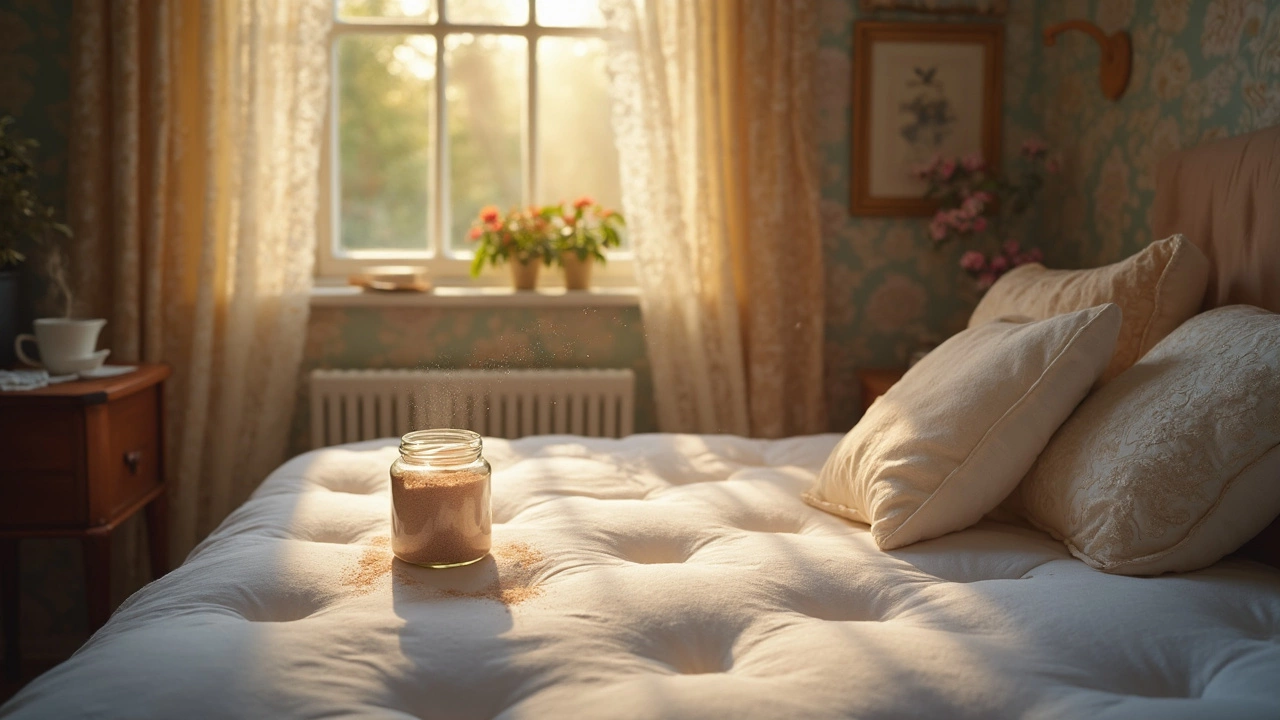How to Disinfect Your Mattress Quickly and Safely
We spend a third of our lives in bed, so keeping the mattress clean isn’t a luxury – it’s a must. A dirty mattress can hold dust mites, bacteria, and even mold. The good news? You don’t need expensive equipment or a chemistry degree to make it safe again. Follow these simple steps and you’ll have a fresher, healthier sleeping surface in no time.
Step 1: Remove Loose Dirt and Debris
Start by stripping the bed down to the mattress. Give the mattress a good vacuum on the surface and sides. Use the upholstery attachment and go slowly; you’ll pull out dust, hair, and dead skin cells that fuel allergens. If you notice any visible crumbs or pet hair, focus on those spots a bit longer. Vacuuming alone won’t kill germs, but it prepares the surface for the disinfectant to work.
Step 2: Choose a Mattress‑Safe Disinfectant
Not all cleaners are safe for foam or spring mattresses. The best choices are:
- Hydrogen peroxide (3%) – kills bacteria and viruses without leaving a strong smell.
- Enzyme‑based cleaners – break down organic stains and neutralise odors.
- Isopropyl alcohol (70%) – great for quick sanitising, but use sparingly.
Avoid bleach or harsh chemicals; they can damage the mattress cover and create fumes you’ll breathe all night.
Mix a spray bottle with equal parts water and hydrogen peroxide, or follow the label instructions for an enzyme cleaner. Test the solution on a small hidden area first – you want to make sure the fabric doesn’t discolor.
Step 3: Apply, Let Sit, and Wipe
Lightly mist the entire mattress surface. Do not soak it – excess liquid can seep into the core and cause mould. Let the spray sit for 5‑10 minutes; this gives the disinfectant time to break down germs. Then, take a clean microfiber cloth and gently wipe away any excess moisture.
If you’re dealing with a stubborn stain (think urine or sweat), spot‑treat with a small amount of enzyme cleaner, let it bubble for a few minutes, then blot with a dry cloth. For odor‑prone mattresses, sprinkle a thin layer of baking soda after disinfecting, let it sit for 30 minutes, and vacuum it up.
Step 4: Dry Completely
The mattress must dry fully before you put the sheets back on. Open windows, turn on a fan, or place the bed in a sunny room for a couple of hours. If you notice any damp spots after drying, repeat the vacuum‑dry cycle – a wet mattress can develop mildew quickly.
Step 5: Protect the Clean Mattress
Once dry, invest in a breathable, waterproof mattress protector. It acts as a barrier against spills, dust mites, and skin flakes, extending the time between deep cleans. Wash the protector every few weeks to keep the whole bed fresh.
That’s it – a quick routine that takes under an hour and can be repeated every 3‑6 months, or sooner if you have allergies or pets. Keeping your mattress disinfected improves sleep quality, reduces sniffles, and gives you peace of mind that you’re not lying on a hidden colony of germs.
Ready to try it? Grab a vacuum, a spray bottle, and give your mattress the refresh it deserves. You’ll notice the difference the next night you crawl into bed.

How to Disinfect a Mattress Without Washing It
Cleaning a mattress without washing might seem tricky, but it's totally doable with some practical methods. This guide dives into effective ways to disinfect your mattress, ensuring it remains fresh and healthy. Learn about the power of everyday items like baking soda and essential oils, how sunlight can be your mattress's best friend, and tricks for banishing bad odors. Keep your mattress germ-free without the hassle of washing it.
Read More